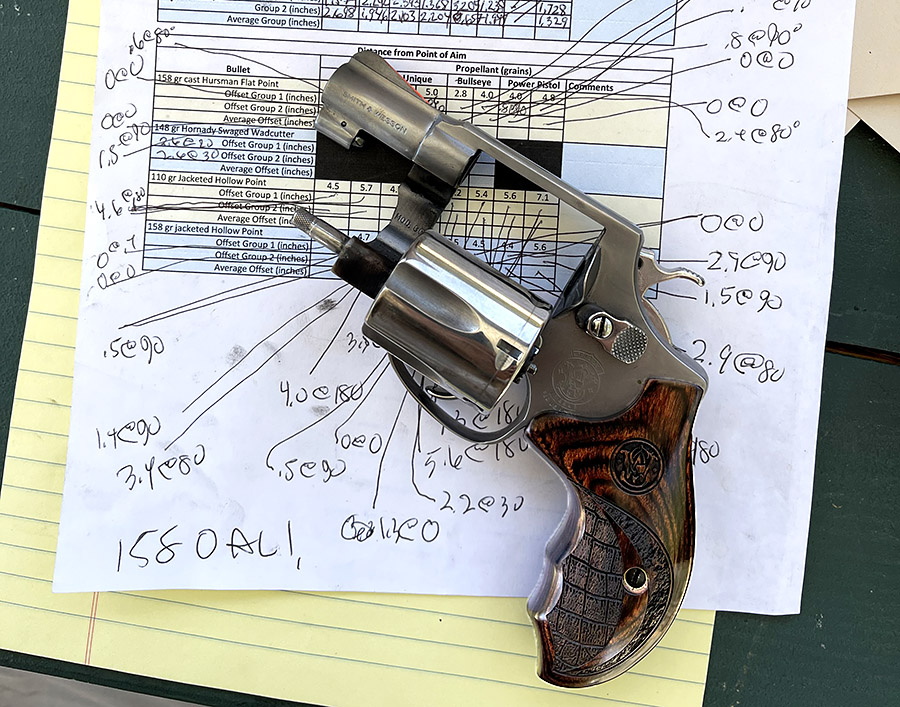A week or so ago I posted a load development plan for my .38 Special Smith and Wesson Model 60, and I recently finished the Model 60 load testing. The Model 60 with its new Altamont grips and the custom work good buddy TJ did for me is surprisingly accurate.
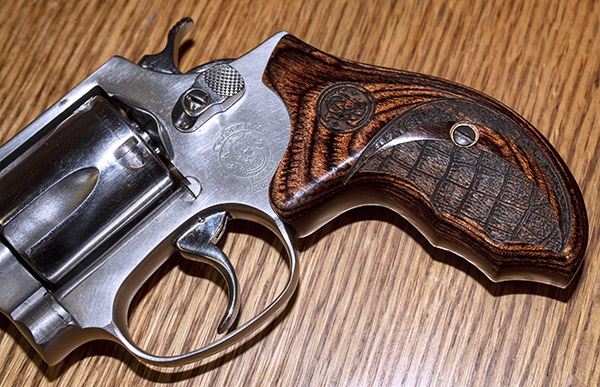
I tested four bullets and four different propellants at two different levels, and I fired two 3-shot groups with each load combination. The one exception was the Hornady 148-grain swaged hollow base wadcutter bullet, which I tested with one propellant (Bullseye) at one level (2.7 grains). I did that because the wadcutter load is my standard target load (and it’s what my Star progressive reloader is set up to produce). The other bullets were the Hornady 110-grain jacketed hollow point, the Hornady 158-grain jacketed hollow point, and a cast 158-grain flatpoint bullet a local caster produces.
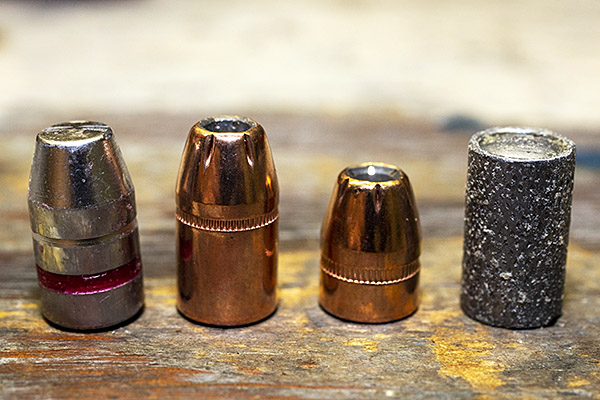

The propellants were Bullseye, Unique, 231, and Power Pistol. As I mentioned above, all groups were 3-shot groups, and I fired each from a bench at 50 feet. I tested for group size and for deviation from the aim point, and I used the standard NRA 50-ft slow fire bullseye target. Point of aim was at 6:00 for all loads.

The group size/accuracy results follow.
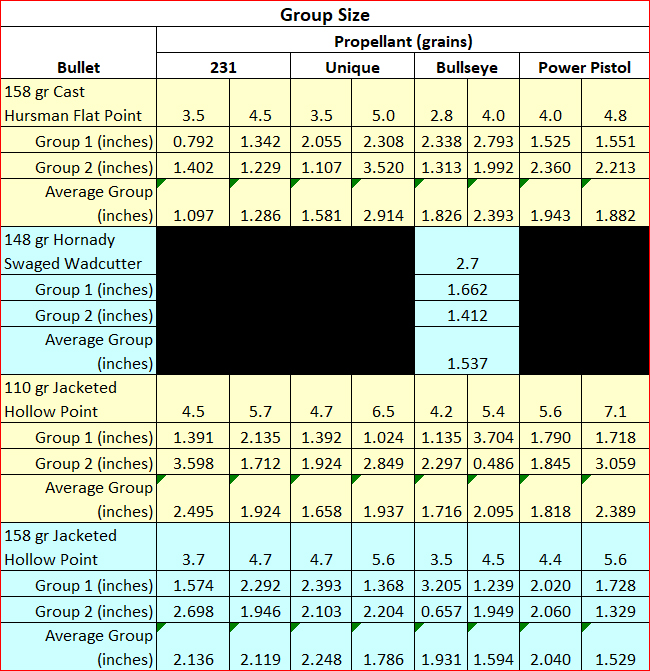
In addition to recording group sizes, I was also interested in where the groups printed with respect to my point of aim. I held my aim at 6:00 on the bullseye. Here’s what I found.
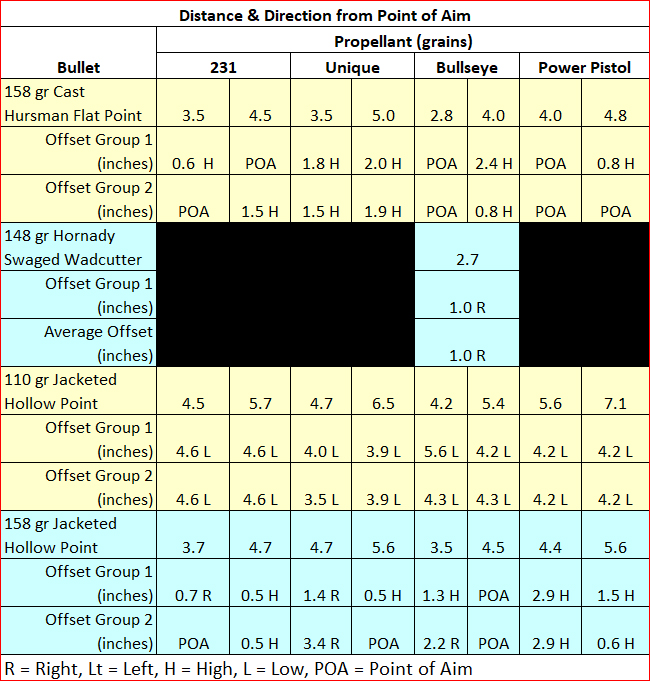
With regard to the group size testing, some of the loads were consistent, and others had some variability I think was mostly due to me. Many of the groups that went above, say, 2.3 inches or so in group size had two of the three shots right next to each other and then one was a flyer that opened the group up. I attribute that to pilot error. Yeah, I know, if I used a machine rest I could have eliminated that, but I don’t have a machine rest. You get what you get with this test, and that’s me.
The 110 gr Hornady JHP shot significantly low with all loads, and its accuracy was okay but not great. It was close enough, I think, for a defense round, but this bullet shot 4 to 6 inches low pretty consistently. That’s because the lightweight bullet squirts out of the barrel before the muzzle has a chance to rise much in recoil (so it hits lower). You might think that these 110 grain bullets would offer a significant recoil reduction, but if that occurred, I couldn’t feel it (the recoil felt about the same as the 158-grain loads). My conclusion is that, for me, 110-grain bullets are a nonstarter for the Model 60.
My standard target load (2.7 gr Bullseye and wadcutter bullets) grouped relatively well, although for me it shot about an inch to the right in the Model 60. That’s probably close enough for government work. It’s good to know this load works, because that’s the load my Star reloader is set up to make (and I make a lot of them).
The 158-grain bullets are obviously what the Model 60 is set up to shoot, and of the two tested, the best accuracy occurred with the 158-grain cast bullet and Winchester’s 231 propellant. It’s a sweet load at either the high or low propellant level, and it shoots essentially to point of aim at 50 feet.
I can also load the 158-grain cast bullet with Bullseye on the Star reloader, and that load did okay at 2.8 grains of Bullseye. The Star reloader has a small amount of adjustment in it for powder throw, but I would leave it at 2.7 grains (the same as the wadcutter load) if I loaded the 158-grain cast flatpoint bullets on it. That’s close enough.
Overall, I was surprised at how accurate a little snubnose can be. It’s not dramatically different than larger target handguns. Some of this is undoubtedly due to TJ going through the gun and making sure everything is perfect. And some of it is due to the Altamont grips. I sure enjoy shooting this handgun.
Help keep us in components: Please click on those popup ads!
More Tales of the Gun.
Never miss an ExNotes blog…get a free subscription here:

